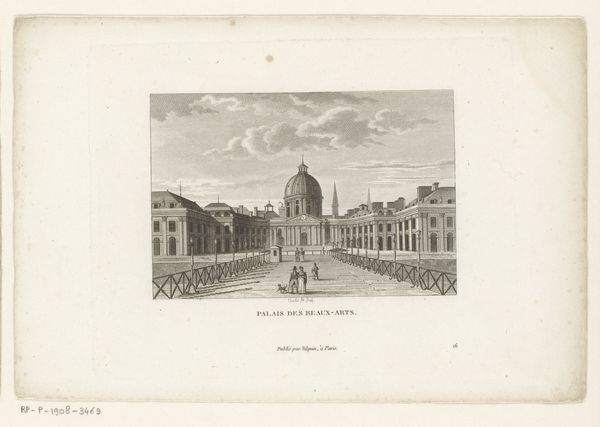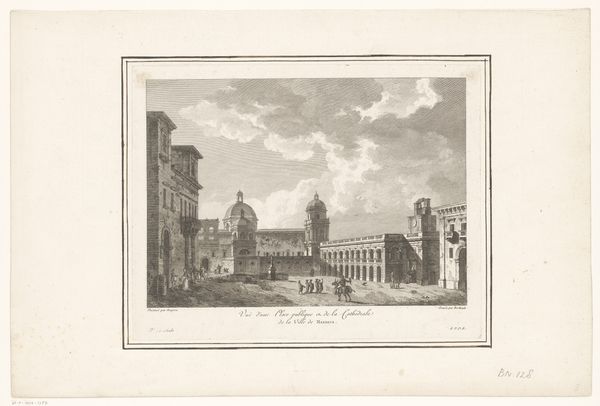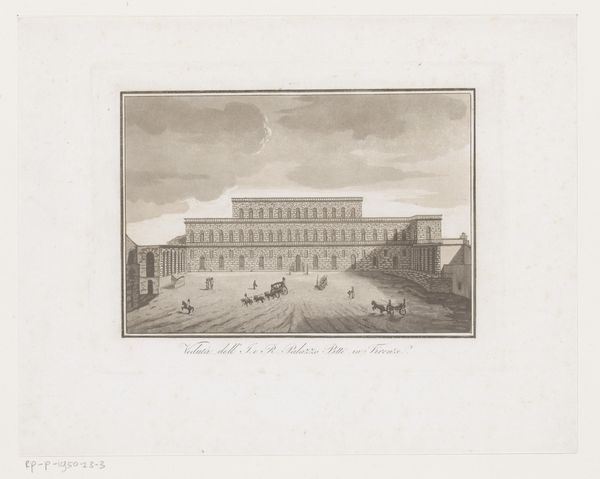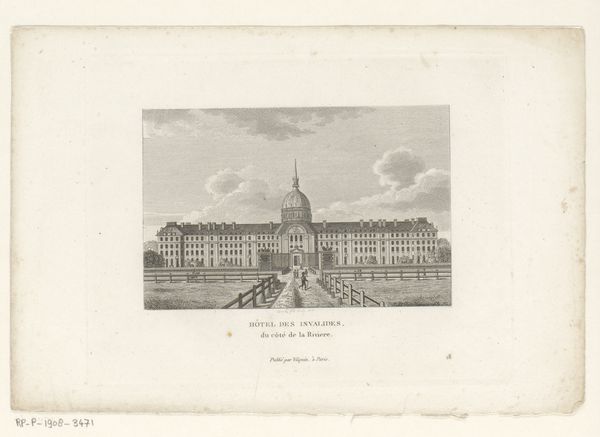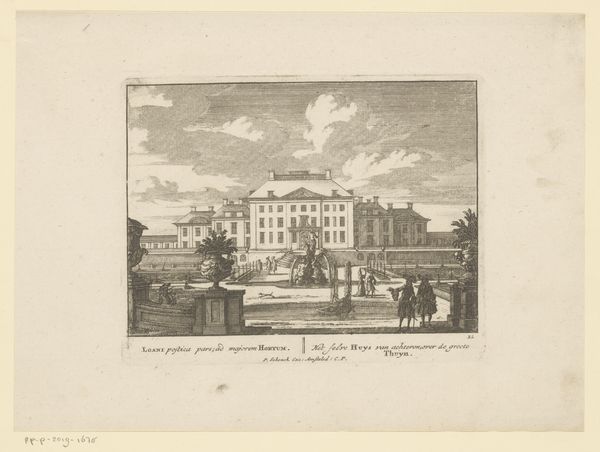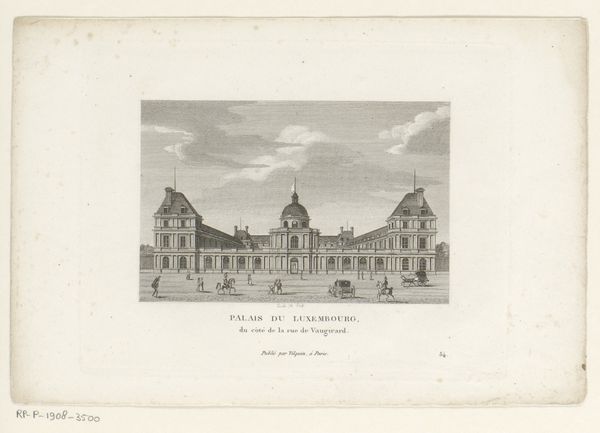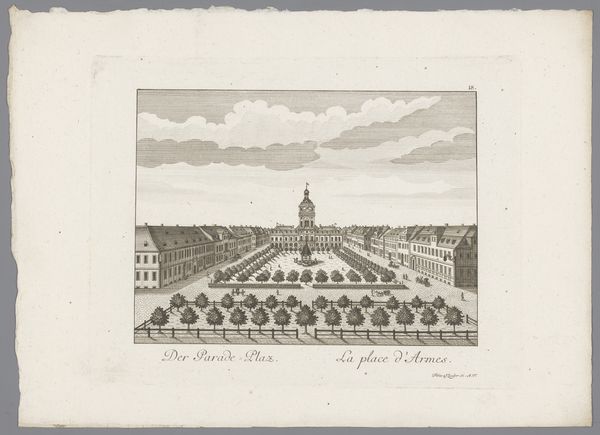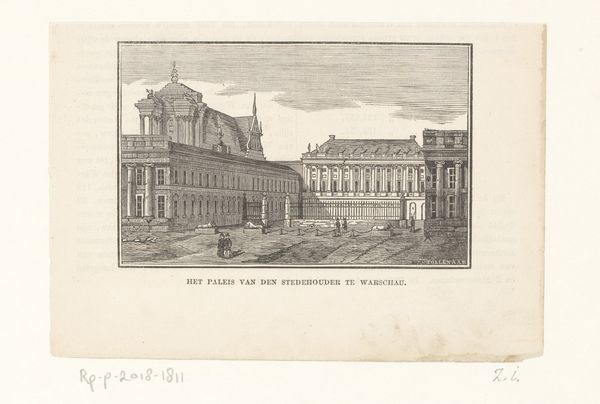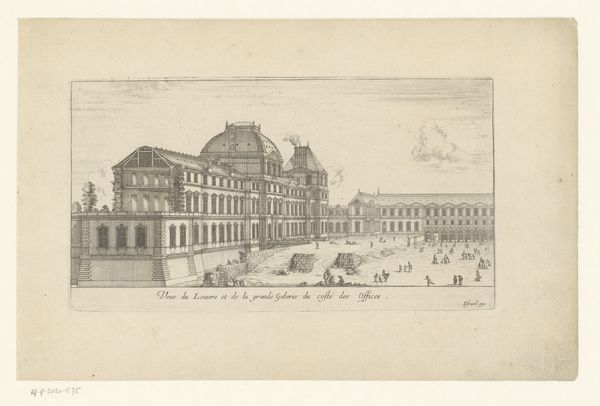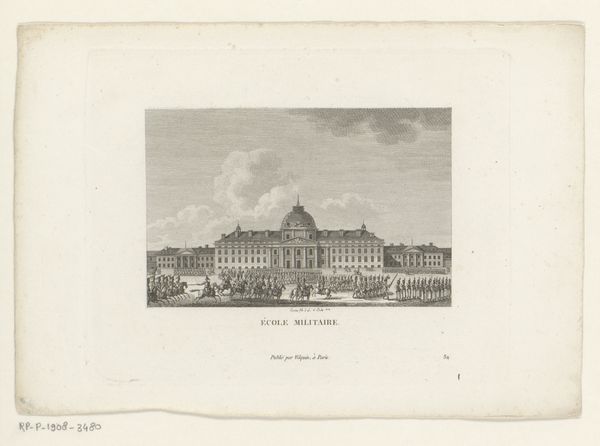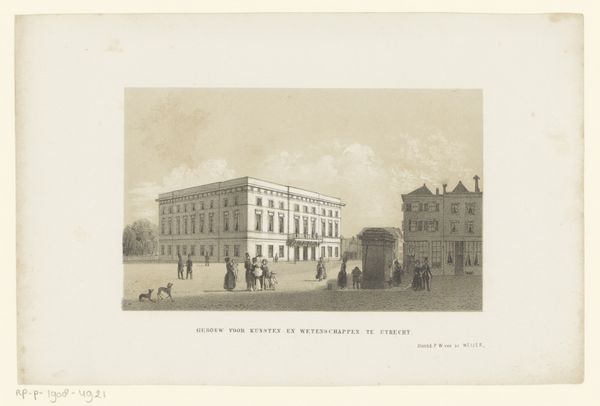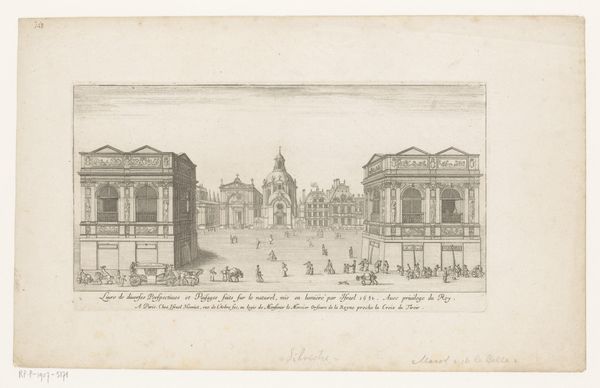
Zicht op het Institut de France vanaf de Pont des Arts in Parijs 1820 - 1821
0:00
0:00
drawing, print, engraving
#
drawing
#
neoclacissism
# print
#
landscape
#
cityscape
#
engraving
Dimensions: height 246 mm, width 315 mm
Copyright: Rijks Museum: Open Domain
Editor: Here we have Jean-Baptiste Arnout's "View of the Institut de France from the Pont des Arts in Paris," made between 1820 and 1821. It's a detailed engraving. The symmetry is striking, almost imposing. How do you interpret this work, especially in its historical context? Curator: The symmetry points directly to the influence of Neoclassicism, a style which intentionally references ancient political organization and power. It is not just a visual preference, but also a social and political one, using architecture to reflect the values of order, reason, and civic virtue so important during the post-revolutionary era. What kind of statement does placing this monumental institute right next to the Pont des Arts suggest to you? Editor: I guess that places the institute, with its Neoclassical architecture and presumably academic values, front and center, using a very public space, the bridge, to give the institute importance and credibility. Is that something printmakers frequently engaged in? Curator: Precisely! Printmakers like Arnout played a vital role in shaping public perception. These images weren't just documentation; they were carefully crafted narratives. The scale of the building is perhaps exaggerated and therefore serves a very specific ideological purpose: presenting the image of a new, powerful and imposing political identity in France. Can you see the purpose now, of neoclassical imagery? Editor: It seems to me that art has power in civic life. The engraving suggests more than just a scene, doesn’t it, it indicates France rebuilding its identity with classic principles. I’ll look at art differently, now understanding how artists engaged in wider political and social trends, not only with artistic ideas. Curator: Agreed. Art’s "public role" shaped everything, particularly within the post-revolutionary environment. This print serves to show that this process continues, even today.
Comments
No comments
Be the first to comment and join the conversation on the ultimate creative platform.
